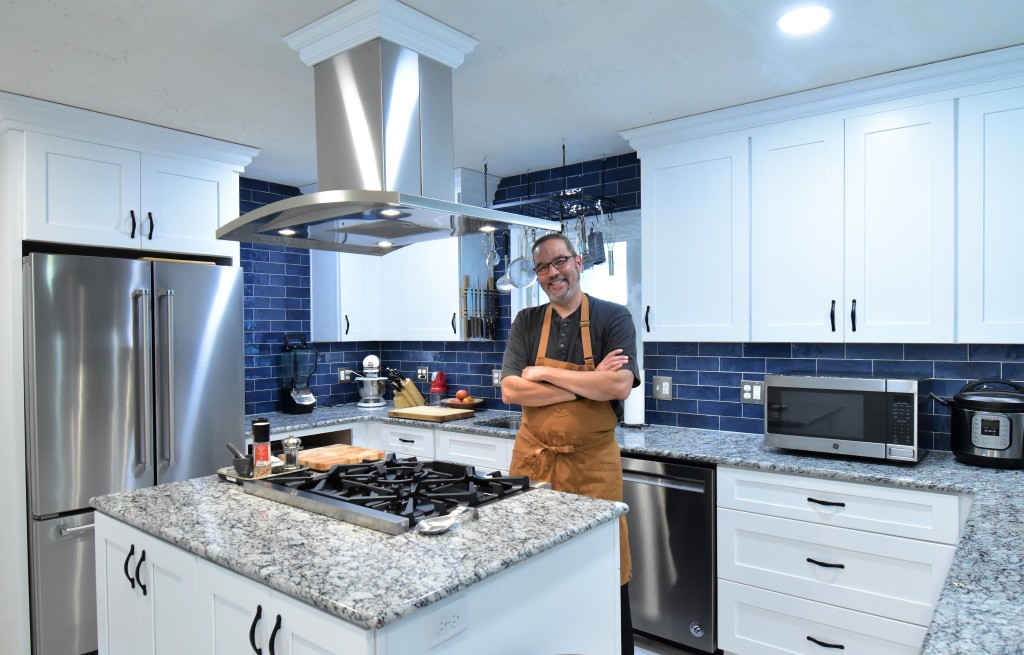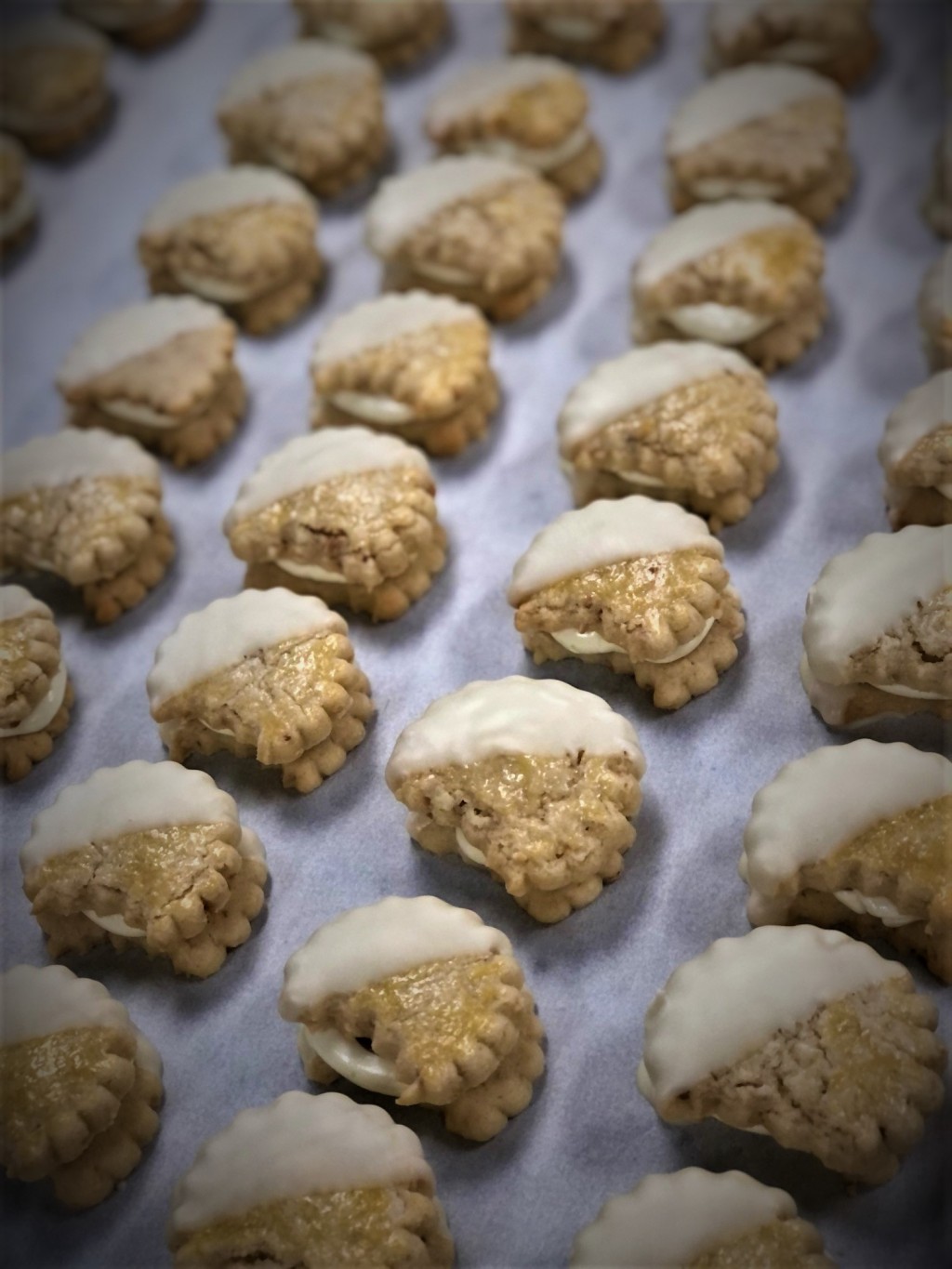
Baking at home during the cold winter months is a great way to spend your idle time versus sitting in front of a computer screen or TV. This past couple of years have seen a spike in DYI baking and cooking at home. In the last few weeks, I too have been baking and making desserts at home using some recipes from my book PDT short for “Pastry and Dessert Techniques”. As with all at-home cooking, baking, and other craft and handy work endeavors, practice is required to produce nice products. Here in this post, I will show the steps, give you some tips, and illustrate the techniques I used to prepare these classic desserts and pastries. Some of the recipes from my book were scaled back to yield smaller amount of portions.

In the last two weeks, I made five classic-style desserts: Lemon Tart, individual-size Bourdaloue Tarts, Chocolate Pecan Tarts, and Gateau Opera featured in the opening image.

The first dessert is a lemon tart featuring a creamy lemon curd bound with gelatine and butter topped with a Swiss Meringue. This recipe is on page 213. For one tart I used a half batch of the recipe. I also used a graham cracker crust; however, a sweet dough crust known as pate sucree can also be used. Here is the recipe for the graham cracker crust:
3 oz granulated sugar, 3 oz butter, 6 oz of graham crackers ground into crumbs, and 1/2 teaspoon of cinnamon. To prepare it mix the butter and sugar together until blended well. Then add the graham cracker crumbs and cinnamon.

A slice of lemon cream tart topped with a thick layer of Swiss meringue served on a Steelite plate. In full disclosure, I must give credit to Fellers restaurant supply which provided me with this beautiful rectangle plate for this post. In the next image are some of the steps to produce this tart.

In rotation from the top left image are some steps and tips for making the lemon curd cream.
- After grating the lemon zest with a micro plane rub it together well with the sugar. This will help to release the essential oils in the skin and produce a more pronounced lemon flavor in the cream.
- When extracting the juice from the lemon use a fork and twist it well to obtain the most juice. This technique is often done with a reamer however a fork does just as well.
- Cook the curd over a pot of simmering water on the stove and use a thermometer until the egg yolk, lemon, and sugar mix gets thick and reaches 175 to 180F.
- Add a small amount of melted gelatine to the hot curd and then cool to room temperature. Then whip in the soft room temperature butter to attain a creamy lemon curd. Spoon or pipe into the tart shell or crust and cool to set in the refrigerator. Then top with a cooked Swiss meringue made with the egg whites left after separating the yolks for the curd.

Tart Bourdaloue is a classic tart made with Pears and Almond Cream which is called Frangipane. To make this tart make sure to first gather all of the ingredients and measure out all of them so that the production of the tart will be easily done. Some tips are:
- After making a smooth sweet tart dough (pate sucree) make sure to chill it slightly and roll it out to a rectangle while the dough is chilled. If the dough is allowed to get too warm it will be too difficult to handle.
- When peeling the pears make sure to peel them quickly and toss them with a small amount of lemon juice to inhibit oxidation of the pears. This will help them to not become brown. Poach them in 25% white wine, 75% water, sugar, and lemon juice. Cook them until they can be pierced with a pairing knife with no resistance and cool them on a plate in the refrigerator.
- I use either apricot jam or orange marmalade in the bottom of the tarts prior to lining them with sliced poached pears and then piping in the smooth frangipane. Lastly, I press in sliced almonds around the rim before baking.
- Once baked I thin out some apricot jam with water and then boil and strain it before I brush the tarts to give them a nice shine.

To prepare Gateau Opera the famous French layer cake I first baked an almond sponge cake known as a biscuit Joconde (1/4 batch from pg 268) then I prepared a 1/2 small batch of French Butter Cream with 1/2 pound of Plugra butter. Coffee syrup is used to soak the layers. lastly, I prepared a chocolate ganache used in the first layer and on the top of the Gateau.

Paris Brest is my wife’s favorite pastry and it is made with Pate A Choux. In PDT the base yield on page 58 has a typo in the ingredients, the butter should be cut in half to 1/2 a cup instead of 1 cup that is printed on page 58. Paris Brest is named after a famous bicycle race which is why the shape of the pastry resembles a bicycle tire. Traditionally it is made with praline-flavored buttercream. I used Nutella for the hazelnut flavor which does quite well instead of preparing a praline paste.

Choux pastry is also used for Profiteroles (ice cream-filled cream puffs) that I served with a Bananas foster sauce and chocolate sauce topped with toasted hazelnuts.

This last image from my baking-at-home post is one of my favorite and easiest desserts to prepare from my book. French Apple tart (Alsatian Apple Tarte pg 214) is made with apples with only four ingredients: butter, sugar, eggs, and cinnamon. It can be made in a sweet pastry crust (Pate Sucree pg 55) or a traditional pie crust (Pate Brisee pg 49). This tart can be prepared without a mixing machine by hand in a bowl. Although my book is meant to teach cooks how to prepare classic sweet and savory desserts and pastries in a commercial kitchen the techniques and many of the recipes can be made at home in small batches too. Hope you enjoyed this post and until next time… bake on, my friends.



Leave a comment